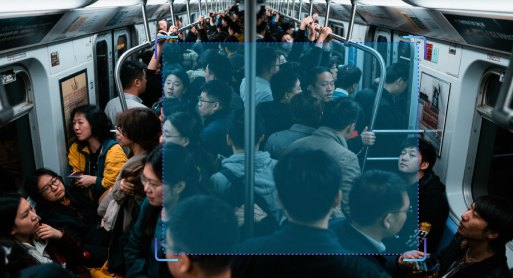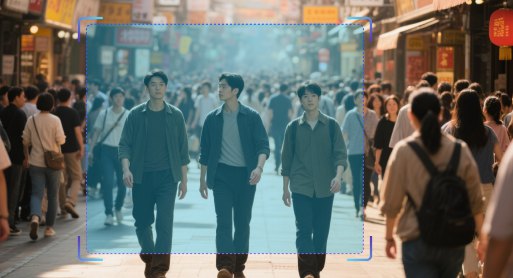
Cross-Line People Counting

Algorithm Introduction
Utilizing AI vision algorithms to perform line-crossing crowd counting in specific scene videos and images, accurately tallying individuals crossing predefined virtual lines, and generating real-time dynamic statistical outputs. The system conducts in-depth analysis of crowd movement patterns across detection lines, providing data-driven insights and decision support for smart security operations.
- ● Camera requirements:
- a) Installation height: 4-6 meters, with video resolution of 1080p (1920×1080) requiring minimum human height of 50 pixels
- b) Detection parameters: >30 pixels per head, <90 pixels per body, with ≤50% head occlusion allowance
- ● Lighting conditions:
- a) Daytime outdoor environments; performance degraded under nighttime conditions or strong backlighting causing low target visibility
- b) Normal indoor lighting; accuracy compromised under insufficient illumination
Application Value
-

Urban Roadways
At critical locations along urban roads, the algorithm identifies pedestrians who enter motor vehicle lanes or restricted zones, providing timely alerts to ensure road traffic safety. -

Parks/Campuses:
For enclosed areas and hazardous zones in public spaces, the algorithm automatically identifies unauthorized individuals, assisting managers in maintaining order and security. -

Bus/Subway Stations, Railway Exits
For areas such as platform edges and equipment rooms, rapid identification and alerts are triggered upon unauthorized entry to ensure passenger safety and operational order.
FAQ
-
Algorithm AccuracyAll algorithms published on the website claim accuracies above 90 %. However, real-world performance drops can occur for the following reasons:
(1) Poor imaging quality, such as
• Strong light, backlight, nighttime, rain, snow, or fog degrading image quality
• Low resolution, motion blur, lens contamination, compression artifacts, or sensor noise
• Targets being partially or fully occluded (common in object detection, tracking, and pose estimation)
(2) The website provides two broad classes of algorithms: general-purpose and long-tail (rare scenes, uncommon object categories, or insufficient training data). Long-tail algorithms typically exhibit weaker generalization.
(3) Accuracy is not guaranteed in boundary or extreme scenarios.
-
Deployment & InferenceWe offer multiple deployment formats—Models, Applets and SDKs.
Compatibility has been verified with more than ten domestic chip vendors, including Huawei Ascend, Iluvatar, and Denglin, ensuring full support for China-made CPUs, GPUs, and NPUs to meet high-grade IT innovation requirements.
For each hardware configuration, we select and deploy a high-accuracy model whose parameter count is optimally matched to the available compute power.
-
How to Customize an AlgorithmAll algorithms showcased on the website come with ready-to-use models and corresponding application examples. If you need further optimization or customization, choose one of the following paths:
(1) Standard Customization (highest accuracy, longer lead time)
Requirements discussion → collect valid data (≥1 000 images or ≥100 video clips from your scenario) → custom algorithm development & deployment → acceptance testing
(2) Rapid Implementation (Monolith:https://monolith.sensefoundry.cn/)
Monolith provides an intuitive, web-based interface that requires no deep AI expertise. In as little as 30 minutes you can upload data, leverage smart annotation, train, and deploy a high-performance vision model end-to-end—dramatically shortening the algorithm production cycle.




